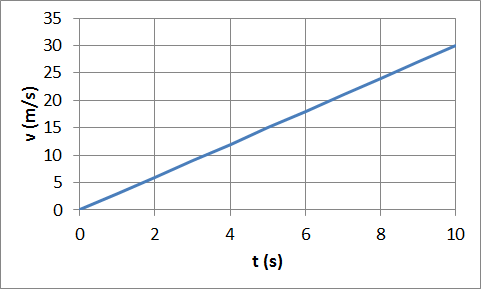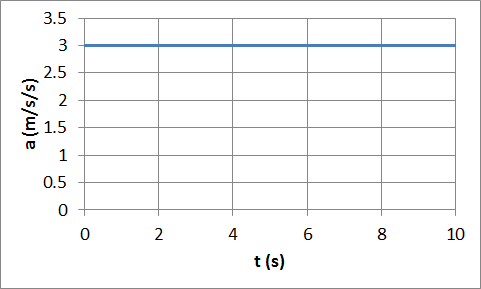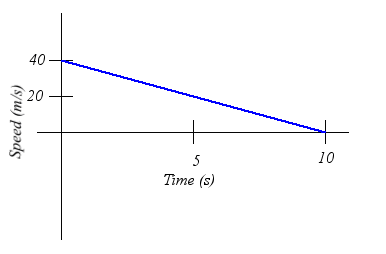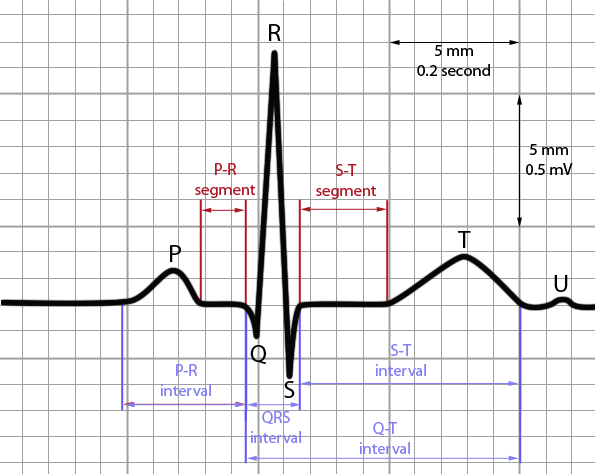

Let us assume at t = 0 a cart is leaving the origin with zero initial
velocity and constant acceleration of 3 m/s2
in the positive x-direction.
Then a = ∆v/∆t, vf
- vi = a(tf - ti), and since vi = ti
= 0 we have v(t) = a*t = (3 m/s2)*t.
The velocity (m/s) versus time (s) graph is a straight line with i a slope of 3.
The acceleration
(m/s2) versus time (s) graph yields a
straight line (a = 3) with zero slope.


Let us consider one-dimensional motion in the x-direction.
Let us make
this explicit by using the subscript x.
The average acceleration equals the instantaneous acceleration.
From
ax = (vxf - vxi)/(tf - ti)
we obtain
ax(tf - ti) = (vxf - vxi),
or
vxf = vxi + ax∆t.
The velocity versus time graph is a straight line.
The average velocity in a
time interval ∆t therefore is just the sum of the final and the initial
velocities divided by 2,
vx(avg) = (vxf + vxi)/2.
The displacement is ∆x = vx(avg)∆t. We can rewrite this expression to obtain xf - xi = ½(vxf + vxi)∆t, or
xf - xi = vxi∆t + ½ax∆t2.
We can also express the velocity as a function of the displacement.
∆x = ½(vxf + vxi)∆t = ½ (vxf + vxi)(vxf
- vxi)/ax = (vxf2 - vxi2)/(2ax)
yields
vxf2 = vxi2 + 2ax(xf - xi).
The equations in red are the kinematic equations for motion in the x-direction with constant acceleration.
Choose your coordinates so that xi = ti = 0. Then x = vit +
½at2.
This is the equation of a parabola. The
position versus time graph is a section of a parabola.
In the limit a = 0
it becomes a straight line.

 The speed versus time graph on the right represents the
motion of a car. Approximately how far did the car travel during the first
5 seconds?
The speed versus time graph on the right represents the
motion of a car. Approximately how far did the car travel during the first
5 seconds?
Solution:
A particle is moving with velocity v0 = 60 i (m/s) at t = 0. Between t = 0 and t = 15 s the velocity decreases uniformly to zero. What was the acceleration during this 15 s time interval? What is the significance of the sign in your answer?
Solution:
Blood is accelerated from rest to v = 30.0 cm/s in a distance of 1.80 cm by
the left ventricle of the heart. Assume constant acceleration.
(a) Find the acceleration a.
(b) For how long does the blood accelerate?
(c) Is the answer reasonable when compared with the time for a heartbeat?
Solution:
